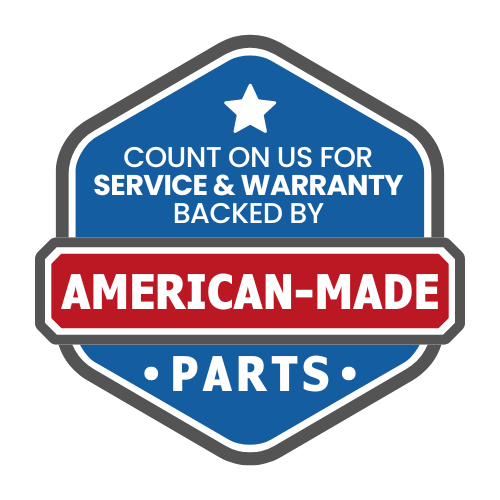1. Visual Inspection
A thorough visual inspection is the first step in maintaining your garage door’s performance. Begin by examining the door itself for any signs of wear or damage. Look for dents, cracks, or any areas that may need repair. Next, inspect the door’s moving parts, including rollers, tracks, and hinges, for signs of rust or corrosion.
- Check the rollers for smooth operation and replace any that are worn or damaged.
- Make sure the tracks are clean, aligned, and free of rust or debris.
- Examine the hinges and tighten any loose screws.
Pay special attention to the torsion spring, which is crucial for the door’s operation. If it appears to be binding up or showing signs of wear, it may need professional attention. Additionally, if your door uses a counterbalance mechanism, make sure it is functioning correctly.
Regular inspections can prevent minor issues from escalating into costly repairs. By keeping an eye on the condition of your garage door, you can ensure it operates safely and efficiently for years to come.
2. Lubrication
Proper lubrication is a cornerstone of garage door maintenance. It ensures smooth, quiet operation and can significantly extend the life of your garage door’s moving parts, including the chain and opener. Here’s a simple guide to keeping your garage door well-lubricated:
- Use a lubricant/cleaner such as WD-40 on the torsion springs or extension springs above the roller tracks.
- Apply a light coat of oil to torsion springs monthly, as recommended by Baumgartner.
- Do not wipe off excess lubricant; it helps prevent corrosion.
- Follow the manufacturer’s recommendations for lubricating the door and the operator.
Remember, some screw openers do not require lubrication. Always check your Owner’s Manual before proceeding.
While lubrication is a task most homeowners can undertake, certain jobs, like replacing springs due to metal fatigue or corrosion, should be left to professionals. Regular lubrication will prevent corrosion but won’t eliminate the natural wear that occurs over time. If you’re unsure about any aspect of lubrication, consult a professional service that can provide detailed information on garage door services, including repair and maintenance.
3. Cleaning
Keeping your garage door clean is not just about aesthetics; it’s about maintaining its functionality and longevity. Start by gently washing both sides of the door with a mild detergent and a soft brush or cloth to remove dirt and grime. Pay special attention to the tracks and rollers, as accumulated debris can cause the door to operate less smoothly.
- Remove any cobwebs or nests from the corners.
- Wipe down the weather stripping to ensure a proper seal.
- Check for rust, especially on metal doors, and clean it off promptly.
Regular cleaning can prevent many common issues and is an easy way to keep your garage door in top condition. Remember, a clean door is more likely to operate efficiently and is less prone to damage.
Pro Tip: After cleaning, inspect the door for any signs of wear or damage. Addressing these issues early can save you from costly repairs in the future.
4. Balance and Alignment
Ensuring your garage door is properly balanced and aligned is crucial for optimal performance. A balanced door will move smoothly and is less likely to cause injury or strain on the door opener. To test the balance, disengage the opener and manually move the door to the halfway point. It should stay in place without assistance. If it doesn’t, this indicates a need for adjustment.
- Disengage the opener release handle.
- Manually lower the door halfway.
- Check if the door remains in position.
Misalignment can also affect your door’s operation. Tracks must be properly aligned to allow the door to slide smoothly. If you notice the door is not moving seamlessly, inspect the tracks for any signs of damage or obstruction. Regular maintenance, including tightening loose hardware and inspecting rollers for wear, can prevent many alignment issues. However, some problems may arise from normal wear and tear.
Regular inspection and prompt repairs on garage door springs and tracks can significantly enhance the longevity and safety of your garage door system.
5. Safety Features Check
Ensuring the safety features of your garage door are functioning correctly is paramount to maintaining not only the performance but also the security of your home. Modern garage doors are equipped with a variety of safety mechanisms designed to protect you and your family.
- Photoelectric eyes, installed on openers since 1993, detect movement and prevent the door from closing if an obstruction is sensed.
- Advanced locking systems deter unauthorized access and include rolling code technology to ensure each remote signal is unique.
- Automated openers have built-in safety features that halt the door’s descent when an obstacle is detected, safeguarding nearby individuals.
Regularly test these safety components to confirm they are in working order. If your system is outdated, consider an upgrade to benefit from the latest safety improvements. Remember, a well-maintained garage door is more than a convenience; it’s a security measure.
A neglected garage door can pose a significant safety risk. Annual inspections and maintenance are crucial for reliable operation and the safety of your family.





